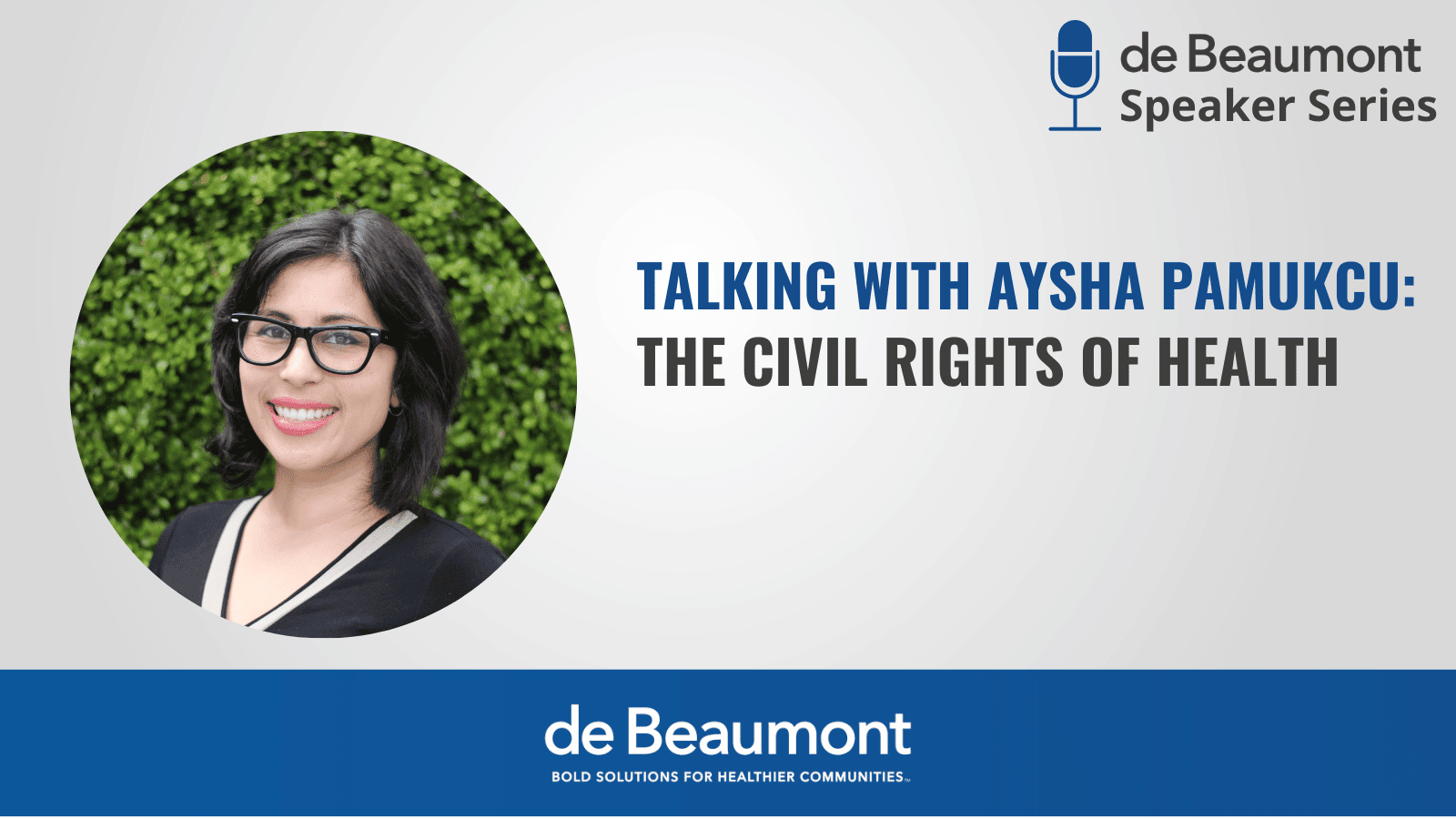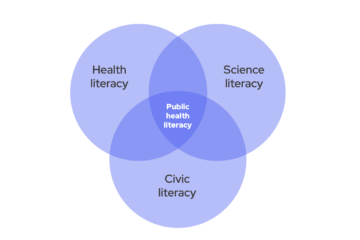The de Beaumont Foundation’s Speaker Series highlights leaders in public health practice, advocacy, policymaking, and other related fields.
Public health thrives on cross-sector partnership, engaging critical allies in the pursuit of health equity and justice. Such collaboration is at the heart of The Civil Rights of Health: A New Approach to Challenging Structural Inequality. Developed by Angela P. Harris, JD, professor emerita at the University of California, Davis School of Law (King Hall), and de Beaumont 40 Under 40 honoree Aysha Pamukcu, JD, who founded Movement Praxis and leads the policy fund at the San Francisco Foundation, the framework allies civil rights law, public health, and social justice movements.
According to Pamukcu, today’s racialized health inequities and state violence are so intractable that public health practice and civil rights law alone cannot adequately address these crises and may inadvertently reinforce racism. Advocates in social justice movements can serve as an accountability partner and bring in the perspectives of communities with the most at stake, Pamukcu said at a recent Speaker Series event.
Civil rights law, public health, and social justice movements all have a role in challenging systemic racism. “Each pillar holds up the whole and has equal value,” Pamukcu said. “In this collaboration, and together, each pillar is greater than the sum of its parts.” She explained the opportunities and limitations across the framework and how the individual pillars work together to effect change.
Civil Rights Law
Advocates in civil rights law can push public health to move even further upstream to explore the “cause of causes” behind longstanding racial inequities, Pamukcu explained.
“Civil rights law is one of the most powerful and effective tools that we have for working towards social, racial and economic justice,” for both individuals and institutions, she said. “I think it also invokes a really powerful tradition with Black folks and other marginalized folks at the forefront of democracy, power, and justice, and some of the most sacred principles of our country.”
However, the legal system’s understanding of discrimination — which often requires showing intent for redress of civil rights violations — and the reality of how racism operates are at odds.
Pamukcu also pointed to how law and public health together have historically perpetuated harm, including forced sterilization and racialized drug panics leading to widespread criminalization. “There are lots of examples of how public health concerns get twisted once they meet the legal apparatus, and then actually further stigmatize marginalized communities,” she said.
Public Health
The public health pillar is essential to the civil rights of health framework in that shows how poor health — and its upstream drivers — move across populations and places. Therefore, “It’s a very powerful way to help us understand at the population and the systems level how structural racism, how discrimination moves across people and place,” Pamukcu said.
She noted one of the biggest successes in explaining such disparities is the social determinants of health, which has expanded the concept of health to go beyond clinical settings and focus on the conditions with the greatest influence on health outcomes.
According to Pamukcu, a limitation of public health is that its focus on universal interventions to improve health overall does not go deep enough into disparities such as the racial health gap. “The field is really shifting right now, but how do we continue to take action on the cause of causes?” she said.
Social Justice Movements
From civil rights to Black Lives Matter, social justice movements have inspired transformation. “They help us change our cultural attitudes, call attention to the limitations of both law and public health, and spark the transformative change that both fields currently are not able to catalyze,” Pamukcu said.
Social justice movements are also key in centering the lived experiences of frontline communities — those harmed “first and worst” by discriminatory policy decisions and in crises such as the COVID-19 pandemic.
“Civil rights law can be a force for good, public health can be a force for good, and indeed they often are, but also we have to recognize that any hyper-professionalized, elite discipline needs accountability partners to make sure they’re not endangering or stigmatizing frontline communities,” Pamukcu said.
Possibilities for the Civil Rights of Health
The civil rights of health framework can be applied to a range of public health priorities, including data collection, budgeting, and policymaking. It is especially useful for connecting health disparities to systemic discrimination, an awareness which Pamukcu noted is evident in a wave of declarations naming racism a public health crisis.
In addition, growing debates over critical race theory speak to the need for a civil rights of health framework, Pamukcu said. “We really need to have an honest reckoning with our racialized past and present. Without that historically informed understanding, we’re stuck in a supposedly colorblind present that actually just ignores or even exacerbates health disparities, especially racialized health disparities.”





